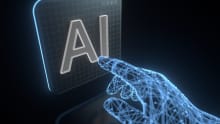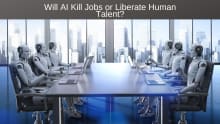The HR software market reinvents itself

Here we are, only a few years into the “cloud revolution” in software, and the entire world of HR technology is starting to reinvent itself. In this short article I’ll give you some tips.
First we have to look at why we buy HR software in the first place. For decades, these systems were used to automate HR and people practices, consolidate practices like payroll, time and attendance, training, and recruitment. So the products were designed to be data centric, consolidated, and relatively simple to operate.
Today, of course, companies are totally different — we operate in teams, nearly every company is global (with global complexity and regulatory issues), and leaders are worried about productivity, alignment, engagement, and building a diverse and inclusive culture. Were any of the “cloud-based” HR systems designed to meet these needs? Not really.
As I describe in the “The HR Software Reinvents Itself”, the world of work has radically changed. We work in teams, we operate 24/7 around the world, and people are overwhelmed with messages, videos, emails, and meetings at work. While we need HR software that manages data and payroll well, we really need tools that improve productivity, engagement, feedback, and learning even more. And that’s why the marketplace is reinventing itself.
For example:
- Tools that manage core HR like payroll and HR operations are almost a commodity; its features like performance management, learning, recruitment, and analytics that drive impact – and companies are now evaluating these tools on how easy they are for employees to use, not just HR.
- The world of performance management, goal setting, feedback, and recognition is coming together – a new breed of vendors are reinventing this space, and many are now offering mobile apps that let you set goals, share information, give peers feedback, and gain self-assessment in real-time.
- The $4.5+ billion learning management system market1 is reinventing itself. While there are more than 200 LMS2 vendors in the market, they are being disrupted by a new breed of “learning experience” platforms, TV-style video learning and content sharing systems, and next-generation learning platforms that will make learning easier and more agile than ever. The world of micro-learning has arrived, and it’s exciting and compelling for employees.
- The marketplace for analytics tools has languished, but is finally coming to fruition. While many ERP vendors have integrated analytics systems in their platforms, we are now finally far enough that these platforms give us information to predict retention, identify better candidates, and find disparities in pay and promotion practices to help us manage people more fairly.
- Video-based interviewing, video assessment, and AI-based tools to identify bias, identify safety and grievances, and analyze feedback are now easy to find. The $1B+ market for employee engagement software is being replaced by new tools that let us get feedback regularly, pulse employees for feedback, and open up communications anywhere.
- A new breed of tools is emerging to help employees manage their time, improve their wellbeing, and understand how to be more focused and healthy at work. These tools used to be training-related, now they are using the techniques of behavioral economics to help us all learn how to make work easier, despite the relentless onslaught of messages and meetings we have all day.
- Core HR systems are becoming more global — most major ERP vendors have built out many of their payroll modules and we can now build virtual or real-time global HR platforms. While nearly every company still has many HR platforms to manage, the integration is becoming easier as most cloud-based systems are platform based, and have open APIs.
- Apps are here, and we can now buy apps for everything – making it easier for employees to manage their time, expenses, travel, and training from any platform.
- We are now seeing the emergence of conversational HR systems that have the potential to truly transform how HR is done. These tools, which I mention in my article “Artificial Intelligence Comes to HR as a Conversation”, have the potential to really change how we interoperate with HR software. Rather than look things up on web pages and portals, we can speak to our systems and find what we need.
I have the opportunity to talk with HR leadership teams around the world every week – and I find a resurgence of innovation, creativity, and new architectures in the world of HR. The amount of innovation in HR technology is expansive, giving us all new options to build or buy employee centric applications.
But let me just give you pause: it’s not enough to go out and find the fanciest new HR systems for your people. You have to make them easy to use, integrated, and relevant to peoples’ jobs.
Perhaps the biggest change I see is the emergence of a keen focus on “the employee experience” – finding a set of platforms (or an integrated one) that makes it simple and easy for an employee to do precisely what they need to do at work. This focus, on “making work life better,” is really the new focus on HR technology, and it demands that we spend time on design thinking, better monitoring what people are struggling with at work, and focusing on productivity, not just HR programs and processes.
And we see a new focus on data security, privacy, and protection as well. As we all put more of our work life into these systems (our time, travel, feedback, communications) we have to be aware that while these systems are analyzing this data, some of it is private, confidential or even protected. One of our recent meetings with HR analytics leaders ended up in a big discussion about how people can build better policies and governance around data protection. You as an HR leader are now the owner of an amazingly powerful and possibly sensitive data set – and you now have to treat it carefully, respectfully, and with the best standards of protection.
Yes, AI and machine learning has the potential to revolutionize HR. We will soon get recommendations about who to hire, who to promote, what career choices to make, and how much to pay people. Will this data be perfect? Of course not – we have to be honest that all these new tools are new and yet to be worked out. So let’s adopt all this technology with a focus on utility, ease of use, and productivity – and hope that the predictive analytics and AI solutions become better over time.
One of the fastest growing new jobs is that of “Robotic Trainer” – people who monitor what AI based systems do and give the system feedback to be smarter.
We in HR have to be “robot trainers” ourselves, so we don’t assume that the machine is always right.
In a few years these systems will be talking with us and we will be able to trust what they say, but for now let’s be careful and make sure any AI-based system is tested, validated, and watched carefully.
Never a dull moment in the world of HR technology – the reinvention is here, and we just have to ride the wave and take advantage of it the best we can.
References
1 Bersin by Deloitte HCM Systems Research, 2017
2 Bersin by Deloitte LMS Systems Research, 2017















